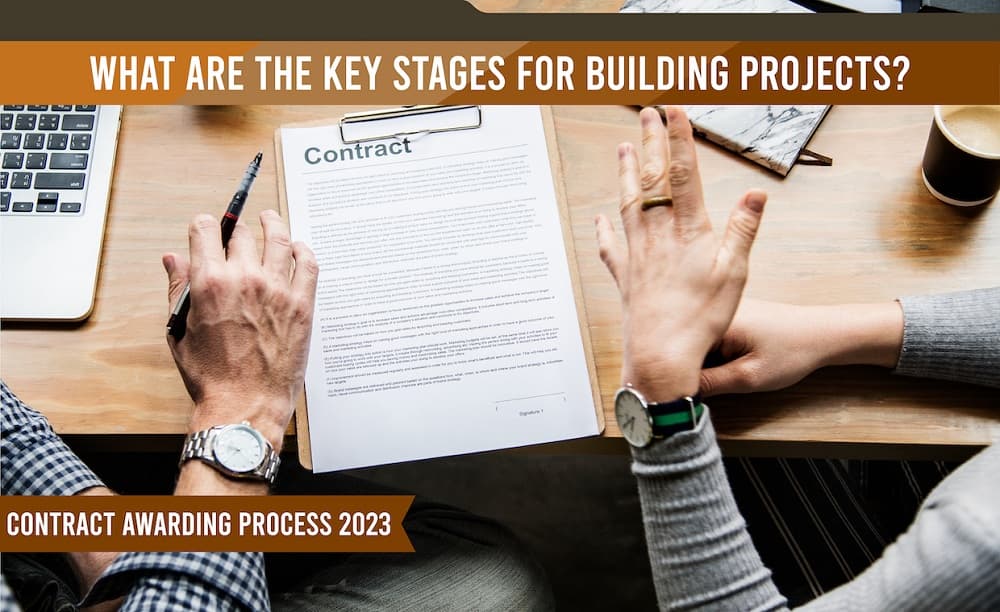
Management rarely gives enough attention to dealing with the stages of awarding a contract. An often-overlooked facet of managing a company is contract management. Those who aren’t familiar with contract management should learn the basics. A contract’s force as a law depends on its proper execution. Enterprises that want to be ready for everything should read up on contracts.
Contract planning goes through a series of stages. It begins with the creation of contract, which is changed, sent out for signature, executed, and finally renewed. An inquiry kicks off the process that culminates in a signed contract, which lasts as long as it takes to full fill the conditions of the agreement and is either terminated or renewed. Organizations occasionally need to monitor the execution of agreements with other businesses. As a result, an efficient and automated contract administration system is essential, as the contract management process tends to be a particularly time-consuming aspect of the company.
Why Is It Needed

Contract Awarding Stages are Essential Because:
- By using a contract management system, you can standardize and automate the way you handle all your current and future contract creations. As a result, you can manage expenses better, keep tabs on money coming in, boost productivity, and make fewer mistakes.
- As a bonus, it equips you with the knowledge and resources you need to make the most of your outbound contracts while meeting the requirements outlined.
- Effective contract management may streamline a business’s operations by providing a framework for laying out business expectations, the procedures required to accomplish those expectations, and an examination of how those goals and the business goals align.
- Contract management optimizes business operations by standardizing how an organization interacts with its partners, most notably its suppliers. It improves the clarity of where your money is going by increasing the visibility of your spending.
- You can strengthen your negotiating position in the future by consolidating your contracts and agreements.
What are the Stages of Managing Contracts?

When it comes to achieving the best possible outcomes from your contract management processes, it is important to have a firm grasp on what goes down at each juncture. The steps involved in managing contracts are as follows:
Contract Planning

In order to move on with the schematic design, it is necessary to first define the project’s purpose. It is important to make two decisions at this stage: those pertaining to the size of the structure and its application. A feasibility study is a must to determine if the solutions offered align with the overall goals.
It is common practice for the owner, architect, and construction manager to move on to the design phase of a project shortly after its inception. It’s crucial to design a system that works for your business before you start putting it into action. Also, crucial to the smooth running of the business is the establishment of company-wide contract management procedures. This provides a road map emphasizing the project’s goals and anticipated challenges. This comes after identifying a suitable site for the project and determining the relevant building regulations. At this point, having an architect involved is essential to ensure everything is doable.
Following the completion of the brainstorming stage, the design process can begin. The design is done before any materials or labor are purchased or the actual work on the project begins. The architect and his staff conceptualize and document the client’s vision. Schematic design, contracts, and design iteration are part of the design process.
Preliminary Contract Preparation
Understanding local circumstances is essential for translating strategic goals into tactical measures. In order to put into practice the procedures you’ve set for handling contracts, you must first put them into action. When it comes to public transportation, many factors, activities, and skill sets can make a difference. Contract management software implementation and the subsequent transfer of contracts to a centralized repository are both parts of this process.
Get the necessary entitlements for your project well ahead of schedule. The entitlements of a building are determined by its purpose and whether that purpose is compatible with local zoning laws. This is why acquiring all required building permits before the start of the project is essential. When multiple agencies with overlapping jurisdictions need to sign off on a project, the approval process might drag on.
Contracting

The contract lifecycle officially kicks off with the contract awarding phase. This first phase of a contract’s lifespan marks the beginning of the agreement. At this point in the contracting process, all parties and interested parties can lay out their goals for working together. Businesses can simply customize a request intake form to facilitate the systematic collection of all pertinent data. Requesting parties can quickly and systematically supply the needed data through a user-friendly interface in contract management software. Here, contract lifecycle management software can be used. It allows businesses to streamline the time-consuming, error-prone process of requesting new contracts, resulting in better and faster quality requests.
Negotiating a Contract and Contract Procurement

Discussions between the parties begin with the drafting of the contract which deals with each party’s desired price structure, terms, and conditions, rights and obligations, warranty clauses, renewals, termination, etc. Maintaining an efficient system for keeping track of proposed amendments during the negotiating process.
In the contract procurement phase, the project staff acquires the required tools, personnel, and supplies. The extent to which this step is challenging depends on the project’s scope, when it may begin, and how many resources are at the team’s disposal. This is where the general contractor hands out smaller contracts to the subcontractors. The subcontractors use the takeoffs to determine their manpower, material needs, and project scope. This improves the contractor’s profit on commercial construction projects. Depending on the terms of the contract, the client may also enjoy these cost reductions.
Implementation

If you’ve done a good job of managing your contracts up to this point, you should be able to see all your contract goals realized. And, much of the work you’ve done in contract management has prepared you to do that. The contract phase, however, is not self-managing, as you will need to pay special attention to the specifics of your agreement and do regular checks to ensure everything is proceeding as planned. A strategy that includes critical milestones and performance indicators can help you stay on track or alert you to potential issues before they become major setbacks. This calls for intensive project management to guarantee that all necessary parties are doing their part and that the contract’s worth doesn’t decline as it expands.
At this point in the process, the contractor coordinates the project’s resources, keeps tabs on the paperwork, and shares updates with everyone involved. Contrarily, it is up to the design team to perform quality control and verify that the final product is in line with the specifications. Substitution requests, change orders, and the design team also review submittals. Some subcontractors may wait until they meet a certain threshold before beginning their job.
Management and Renewal
Your contracts will last forever. Maintaining track of termination or renewal when the contract cycle reaches its end date is crucial. The final phase of a contract’s lifetime varies from deal to deal. In cases where the parties’ relationship is mutually beneficial and they would like to maintain communication and carry on doing business together, a contract renewal may be appropriate. Losses in the form of lost long-term relationship building and synergies, missed revenue maximization opportunities, etc., might arise from neglecting to renew a contract promptly. The company must implement a different procedure to fulfil the same contract stipulation. A contract audit is a useful tool for assessing the degree to which both parties abide by the stipulations of the contract and identifying any potential issues.
With a cutting-edge contract management software solution in place, parties can easily revisit discounts, renegotiate terms, and pursue additional potential realization without going through the steps above for a new agreement. Before committing to a course of action, be sure that all relevant parties know the termination and renewal dates and that you have adequate time to analyze the available data.
Conclusion
Construction projects are short-term endeavours that need different types of resources. The construction process is a linear sequence of tasks, resources, and choices. Those unfamiliar with the construction process may need help navigating the stages of awarding a contract successfully. Contract managers must watch for modifications or breaches of agreement as various types of contracts progress through their respective phases. It may be worthwhile to negotiate changes to a contract if it is causing problems for the business or the employee. Using a skilled construction manager also makes it feasible to strike a good balance between project duration, budget, and scope.
Author Bio
Nafisa Nazneen Choudhury – Nafisa Nazneen Choudhury is a Civil Engineer (completed B.E. from Assam Engineering College) and is currently pursuing M.Tech in Structural Engineering at National Institute of Technology, Silchar. She is a Technical Content Writer, having over 3 years of experience and has wrote many articles related to Civil Engineering. She is also a Book Author (Authored – “Dream Tales of NNC: Revenge By Murder”) and her book can be found on Amazon. She is also a Guest Author at Gharpedia. Moreover, she is a certified member at Institution of Civil Engineers (ICE) and National Society of Professional Engineers (NSPE). She writes her blogs at her website – nnc2017.wordpress.com. She can be reached on LinkedIn.






























